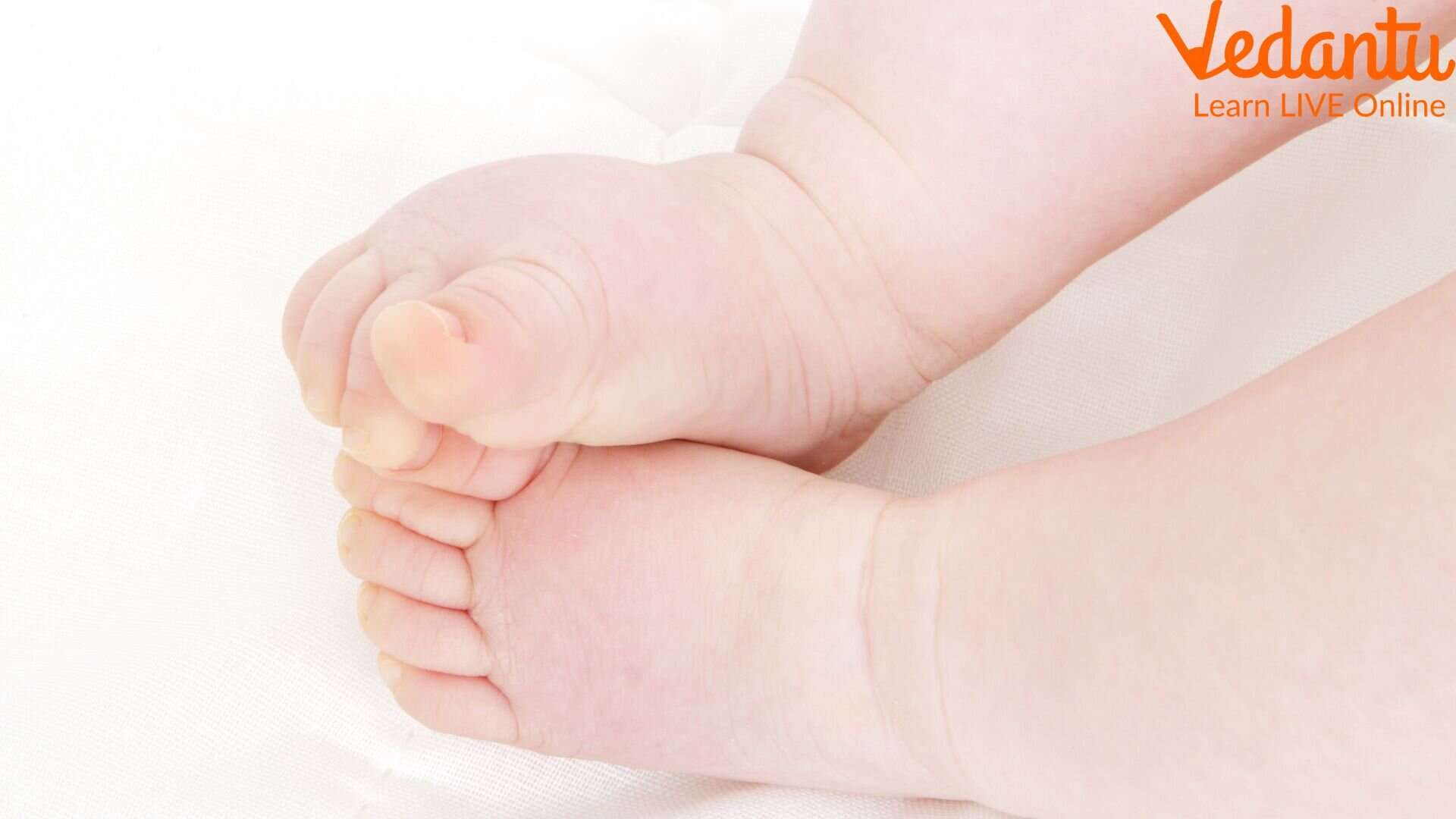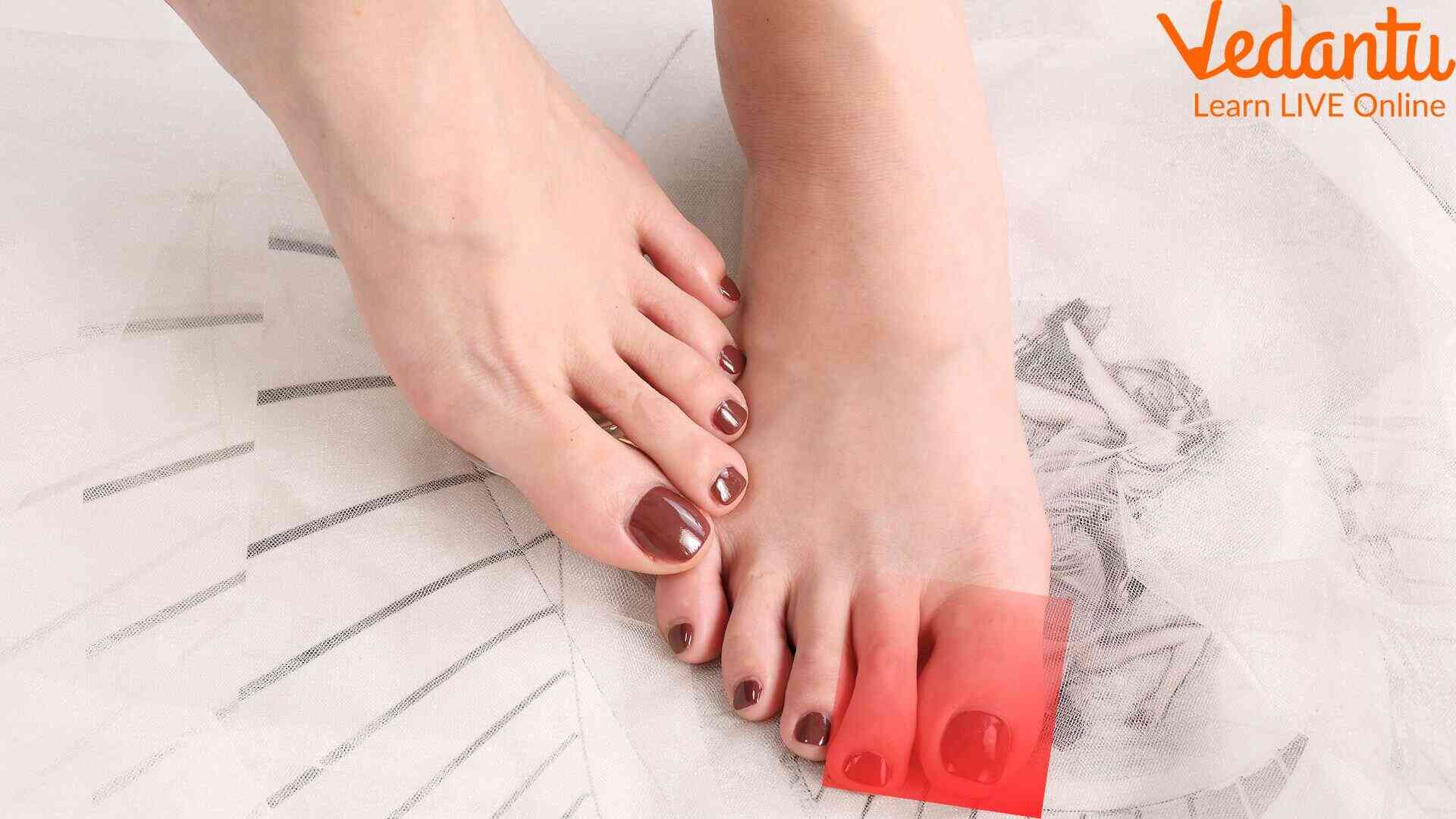What are Toes? Why are they Important?
Toes are the fingers of the foot of any tetrapod. A tetrapod is a superclass of animals that includes all vertebrates. These constitute amphibians, reptiles, mammals, birds, and their ancestors. Toes provide proper balance and posture to our body and support the body weight while walking.
Different animals follow different walking skills. Animal species that walk on their toes are called digitigrades. For example, cats and dogs fall under this category. Plantigrades place the entire length of their feet and walk on their soles. Bears, humans and a few other animals belong to this group.
Some animals walk on the hooves present at the tips of their toes. This category is called unguligrade. Deer, sheep, horses, goats, etc. are a few examples of unguligrade. Read through this article to learn exciting things about toes.

Pinky Toe
Structure and Function of Toes
The toes have a very typical structure. Each toe of a foot is made up of three phalanx bones. These include the proximal bone, the middle bone and the distal bone. The hallux or the toe is an exception to this structural arrangement. It consists of only two phalanx bones - proximal and distal.
The middle bone is missing in the big toes. Almost 75% of the time, our toes stay on the ground while we take a walk. This is when they exert pressure so that we can take the correct posture during the gait cycle. Also, while running, toes help the foot to bear the weight of the entire body. Apart from bearing the body weight and helping us move forward when we walk, toes also help increase the length of your steps and strides, thus, allowing you to run faster.
How Many Toes We Have?
A toe refers to the part of every human foot. Each foot consists of five toes, and there is a name of toes on the foot.
The first toe is the innermost one and is commonly known as the hallux. It is also known as the big toe or the great toe.
The second toe is called the long toe.
The third one is called the middle toe.
The fourth toe is known as the ring toe.
The fifth toe, the outermost one, is known as the pinky toe. It is even called the little toe or the baby toe.
Functions of Each Toe
Each of the toes present in each of our feet has some specific functions. Let us get to know these functions in detail.
Importance of Big Toes
Big toes, or the hallux, are the most important of all the toes. They are crucial in maintaining proper balance and holding our body weight. Their main function is to direct the entire body weight through the foot toward our walking direction.
It is surprising that the big toes bear almost double the amount of weight as all the other toes combined. This is about 40 per cent of the entire load. The alignment of the big toes with the other toes allows the feet to push off the ground.
If we lose our big toe accidentally, it will affect our walking and running gait, thus, leading to a slower and jerkier stride. This could be treated by physical therapy and using fillers.
Importance of Long Toes
The second toe, also known as the long one, is narrower than the big one, consisting of a squarish nail and a small distal phalanx bone. Unlike the big toe, it has three phalanges. Some people have often observed that the second toe is longer than the hallux. This could increase the chances of calluses that are formed on the sole of your foot, as well as a few other pains related to the foot. This condition is known as Morton’s Toe or Morton’s Foot.
Uses of Middle and Ring Toes
The third toe, also called the middle toe, the fourth toe, and the ring tow, is smaller and narrower than the big toe. Each of them consists of three phalanges. If we lose any or both of these toes somehow, it does not mean we won’t be able to walk or run any further. However, it will negatively affect our body stability and balance and possibly change the mechanism of our walking. Toe filler can be provided as a remedy along with some physical cure.
Importance of Pinky Toe
The pinky toe, also called the little toe or baby toe, is the outermost toe in our foot. Unlike the big toe, it is made up of three phalanx bones like the other three toes. It is the least important of all the other toes. Being the smallest one, it bears the least amount of our body weight and has the slightest impact on maintaining balance. People who lose a pinky toe in an accident or are born without one will hardly see, if any, changes in the functioning of their feet.

Importance of Pinky Toe
How Painful Can Your Pinky Toe Be?
Although the pinky toe is the smallest and said to be the least important one, it can hurt you big time if it gets injured, fractured or even needs to be amputated. Pinky toe pain is quite common and can have many causes, such as corn, tight-fitted shoes, a break or sprain, bone spur, and so on.
You can always live without this baby toe, but it’s easier when you have one as it works in sync with the other toes and the rest of your foot to let you go where you are headed with ease. The pinky toe provides balance and propulsion while walking. When it is injured or damaged due to an accident, the propulsion is restricted, leading to an affected gait. It is always important to wear the proper shoes, as the wrong ones can potentially impact your little toe.
Among the symptoms of an injured or broken pinky toe, the most common include a popping sound at the time of injury, throbbing and shooting pain, severe swelling and bruising, and difficulty bearing the body weight on the foot. The pain might fade away after a few hours.
Conclusion
The toes are the most important parts of our feet as they provide balance and support while walking. They enhance propulsion during the gait cycle. While the big toe is said to be the most critical one, the importance of our pinky toe is no less. Losing any of the toes might not stop you from walking or running, but it can adversely affect your foot’s biomechanics and be psychologically distressing. It can be utterly painful if you get hurt or injure your little toe accidentally.







